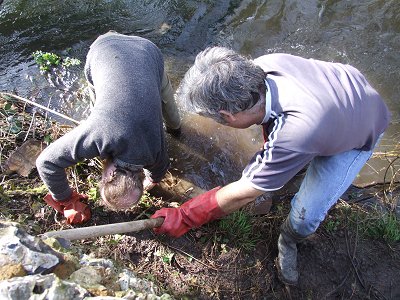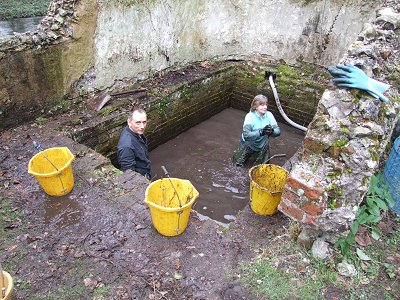Request from a developer to investigate and survey workings uncovered during site development works.
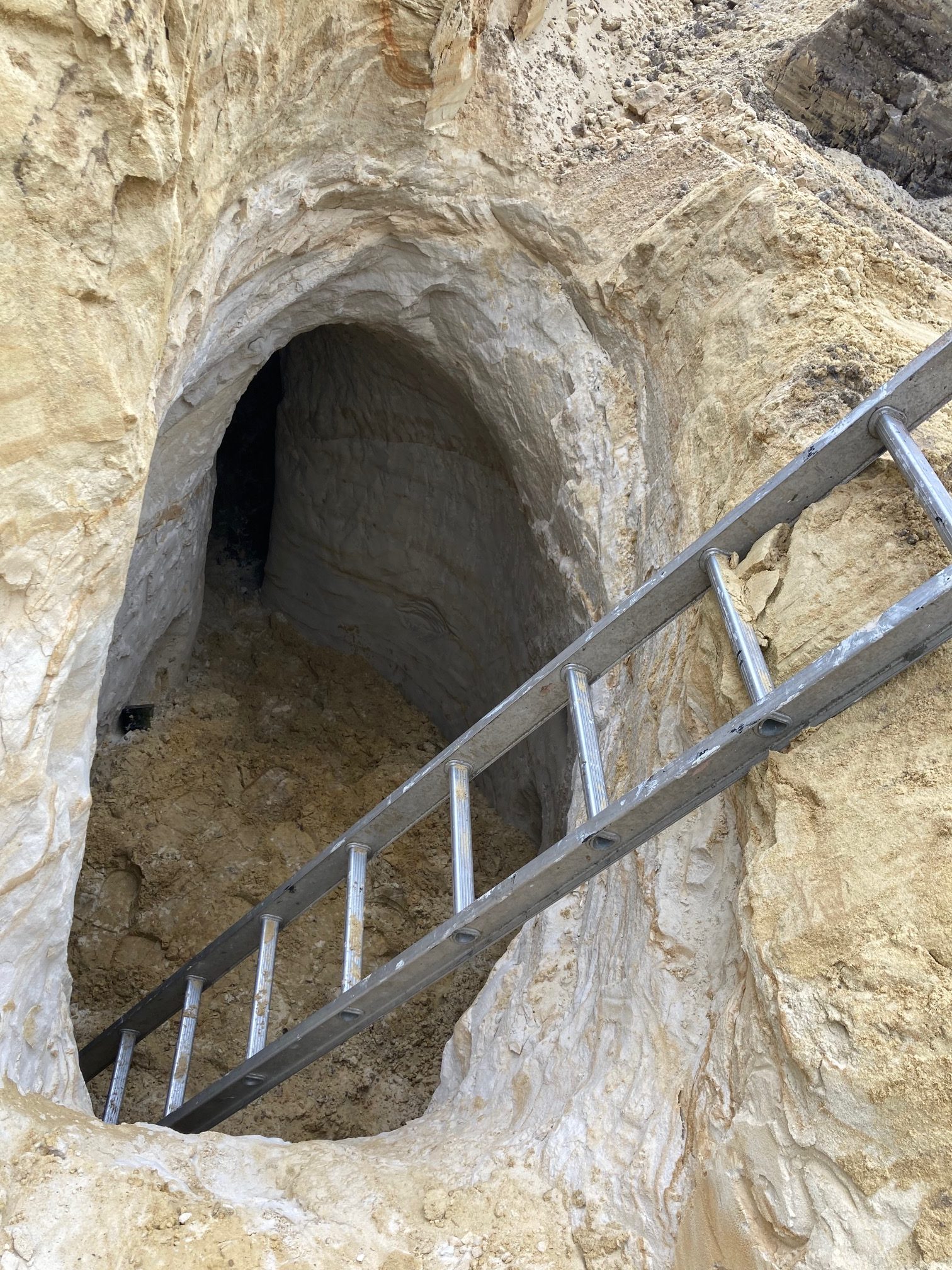
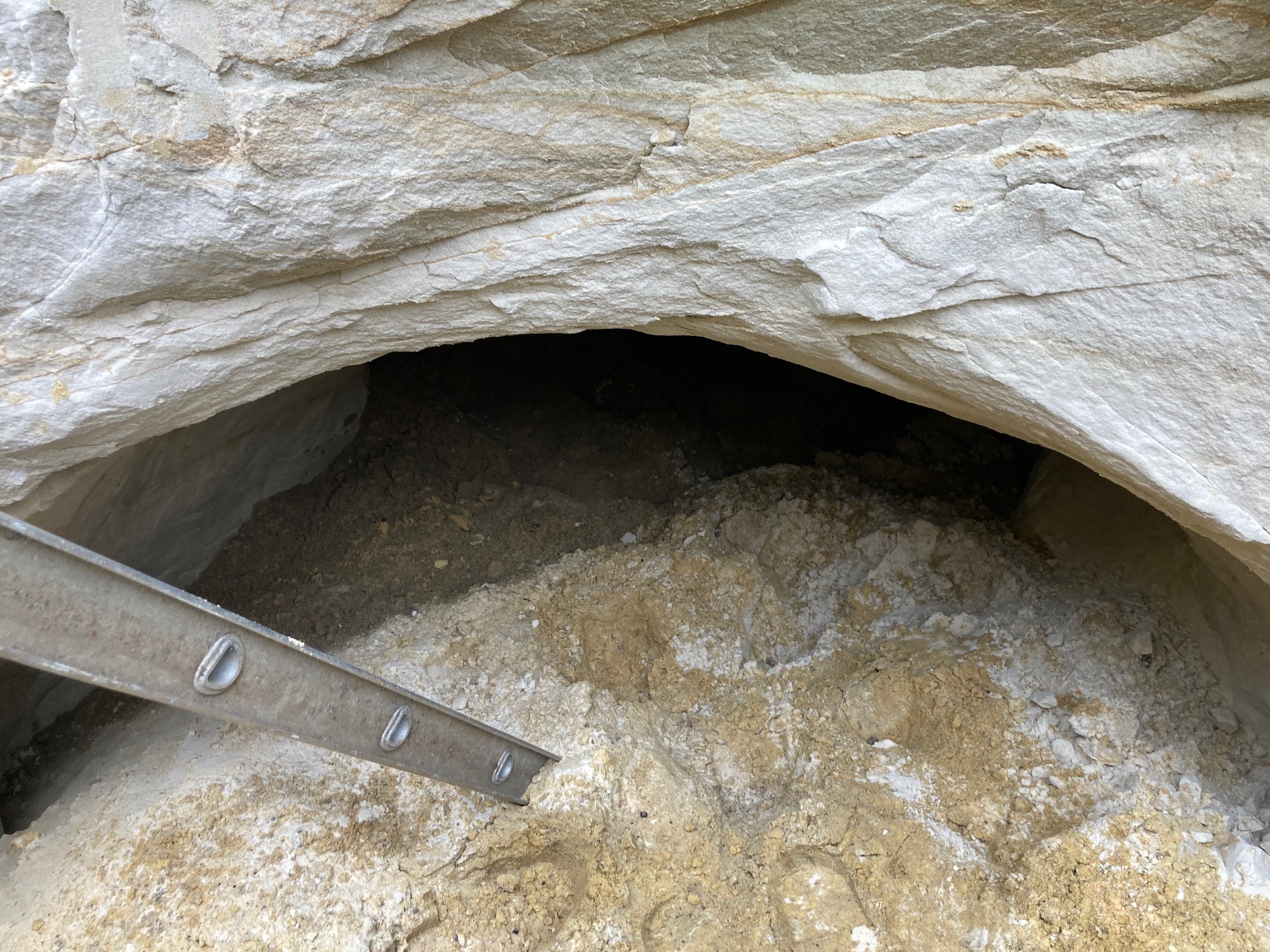
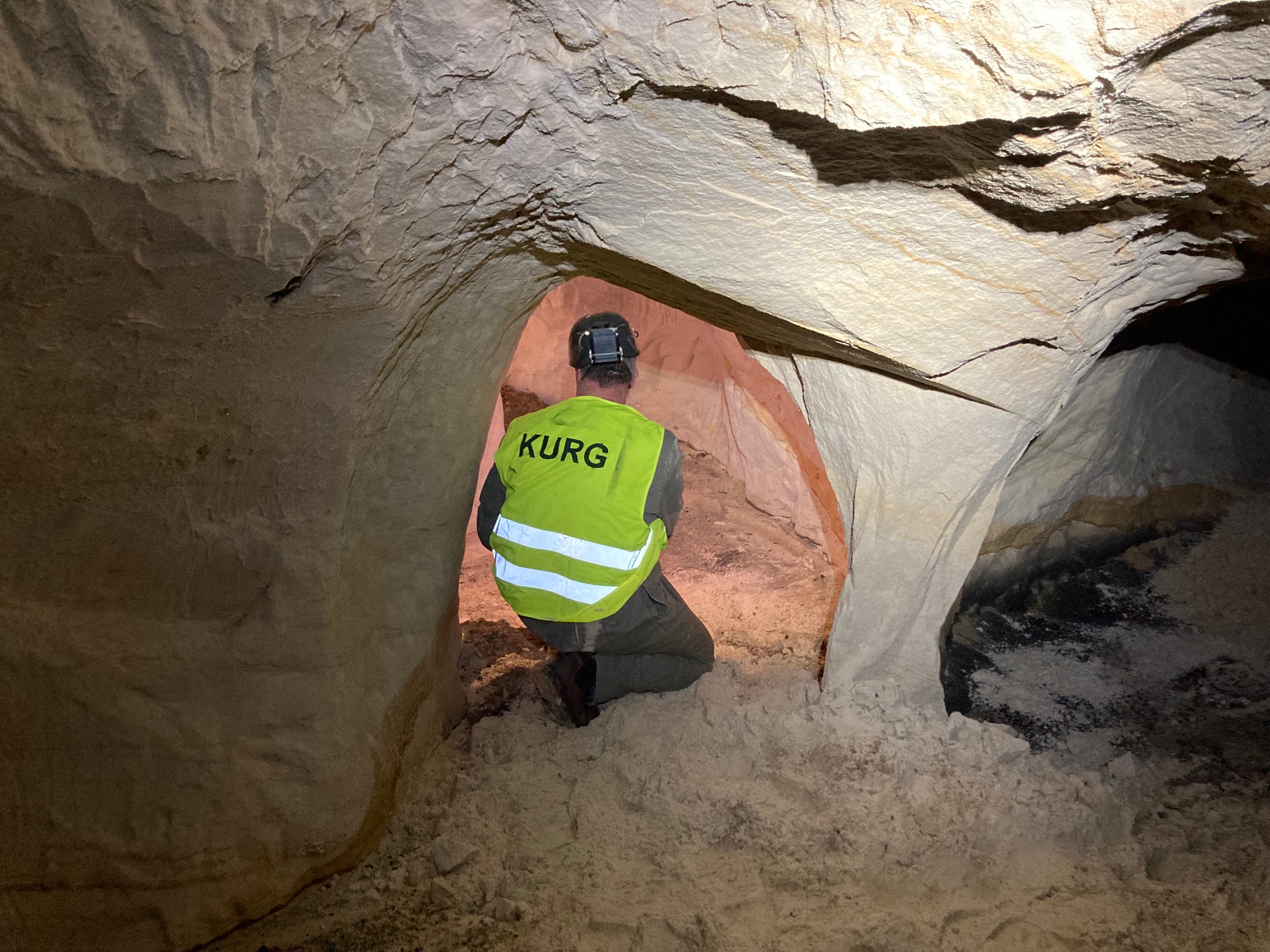
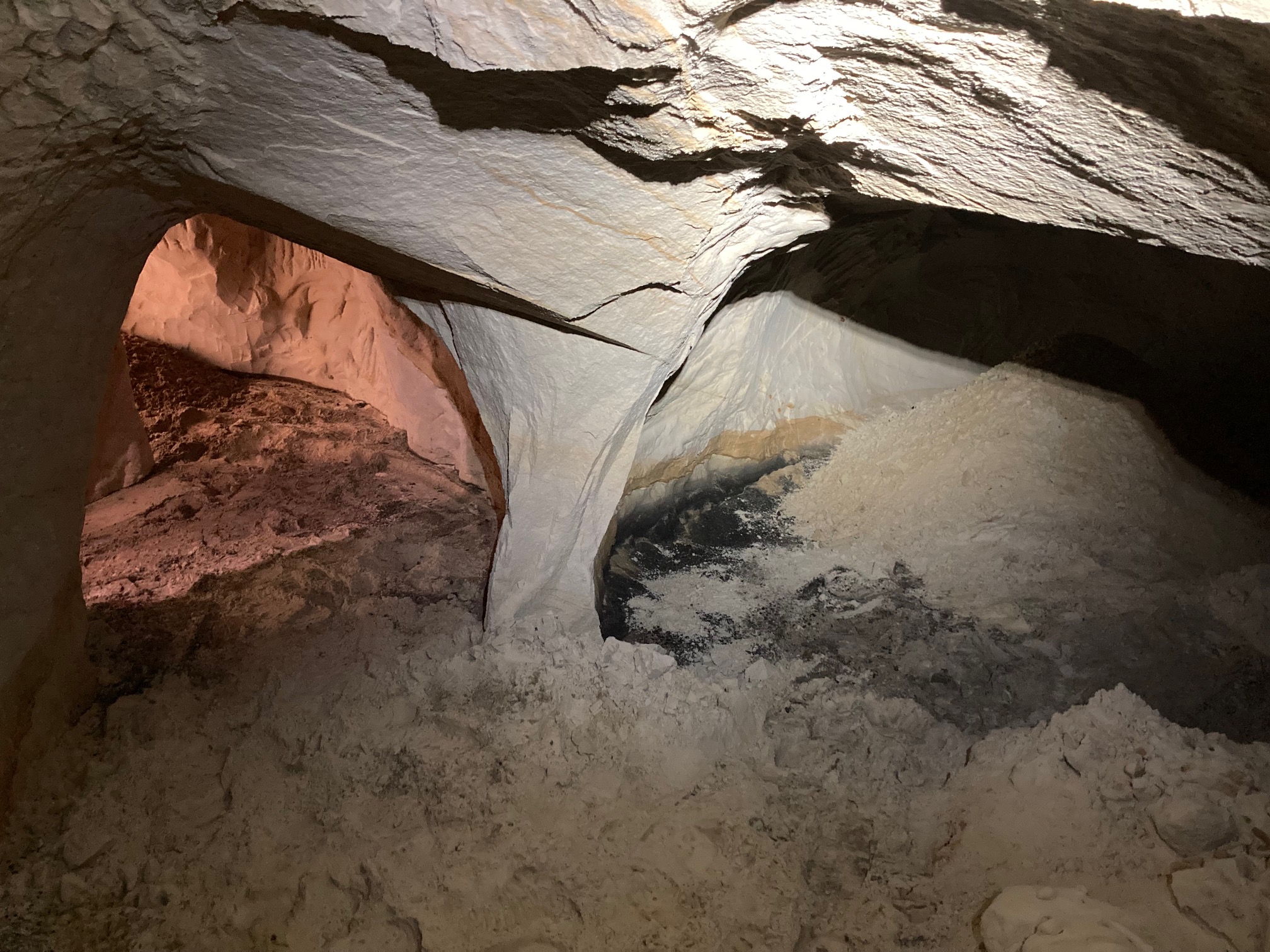
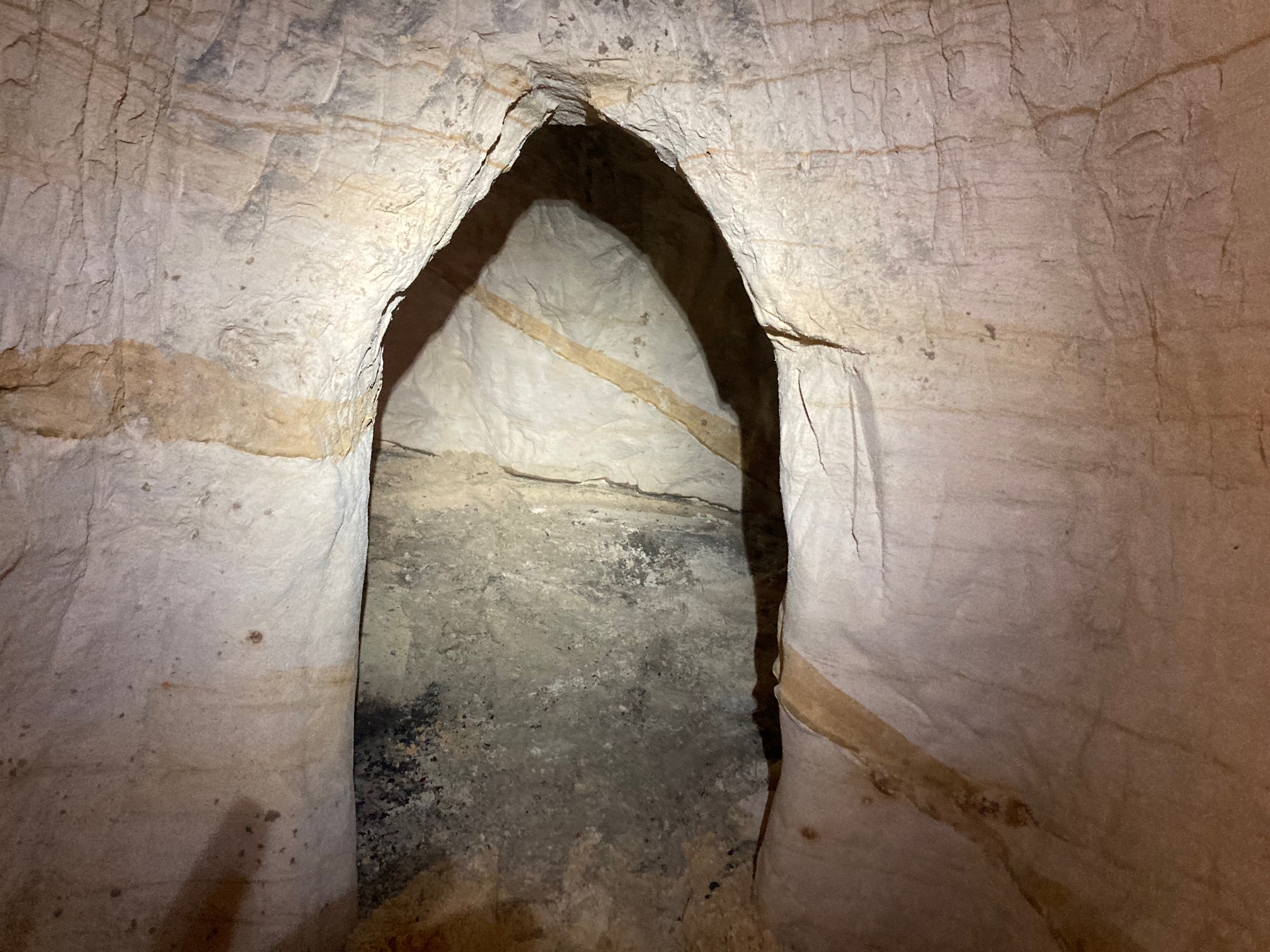
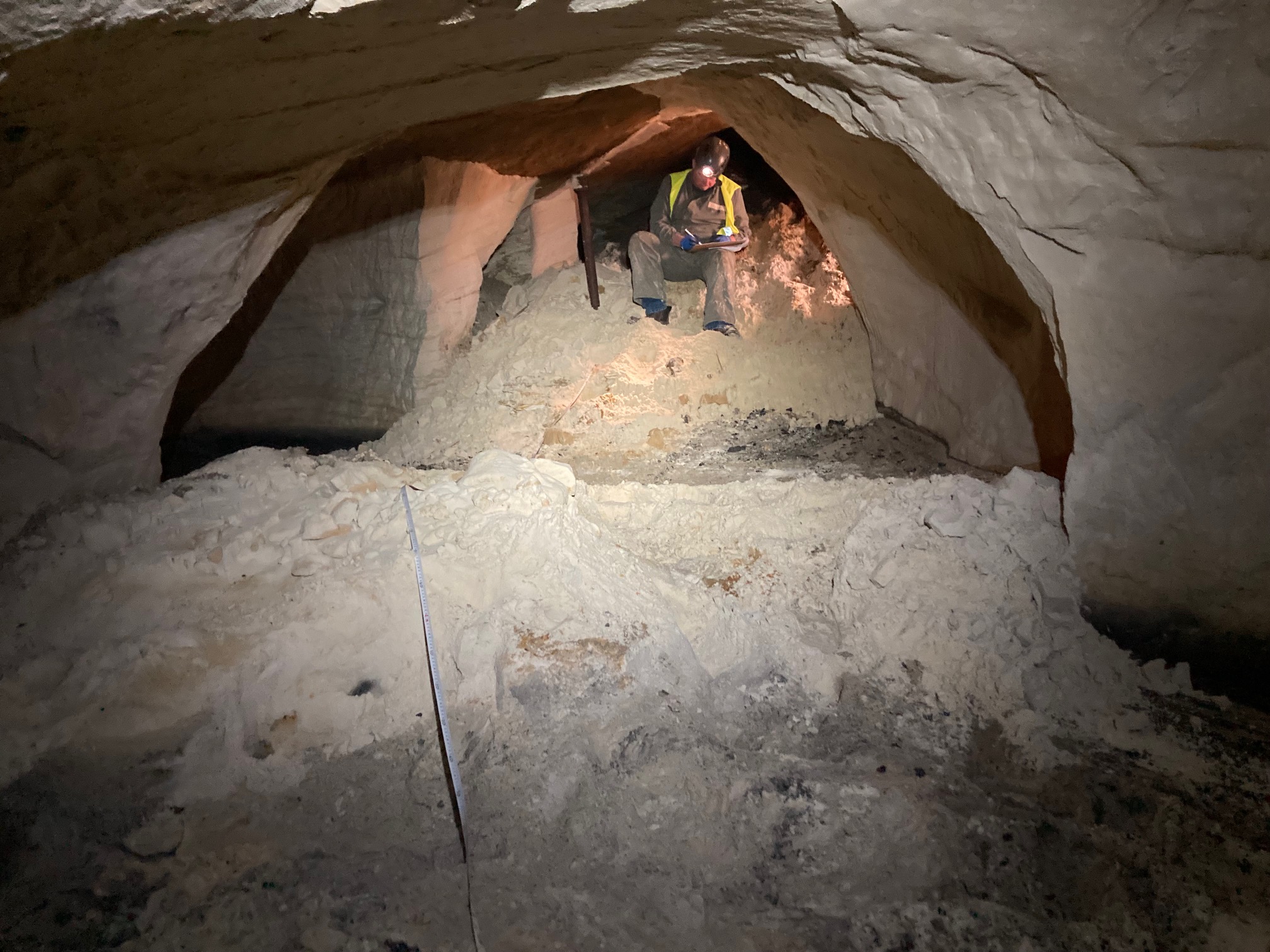
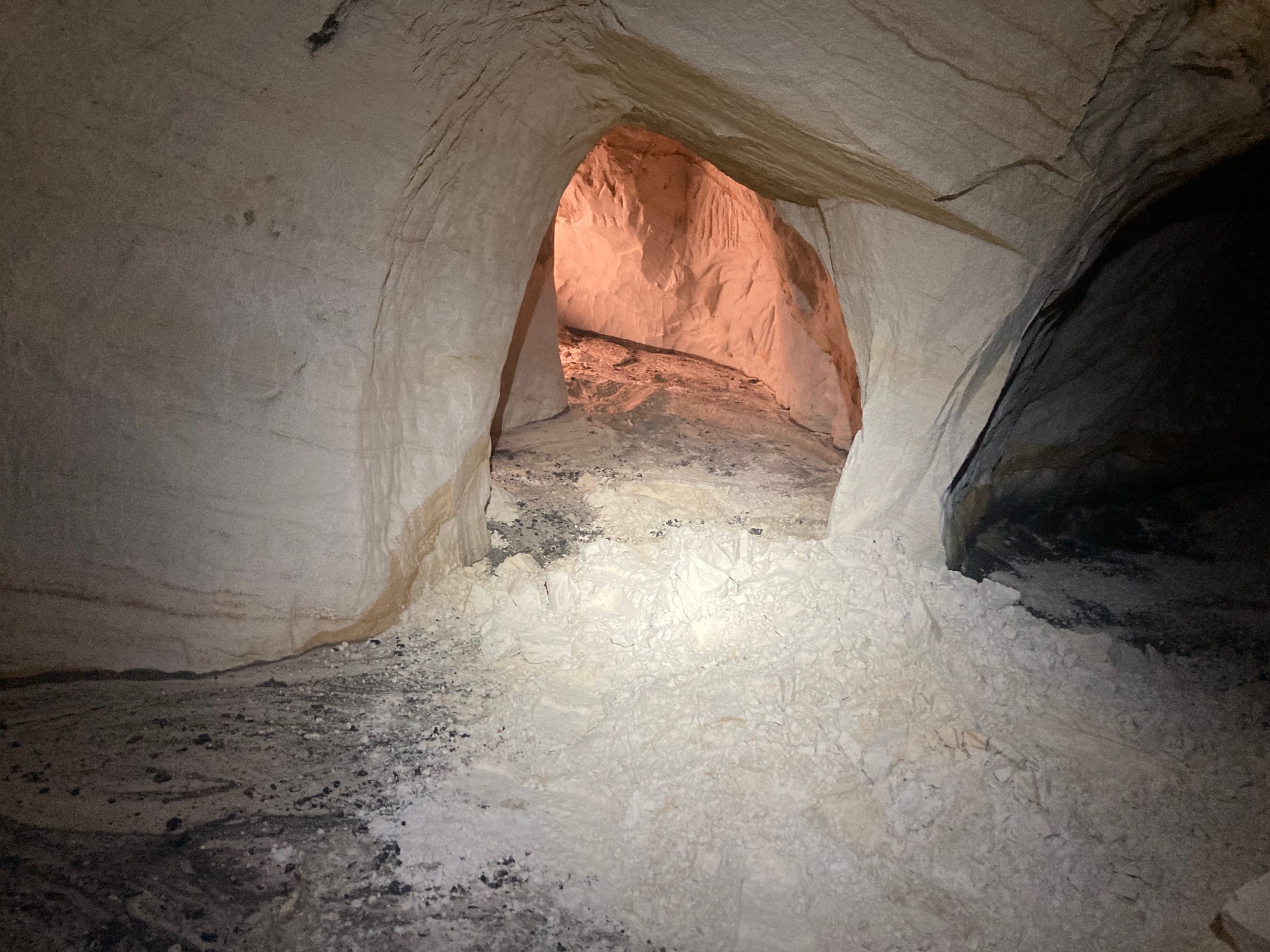
On 11 May 2022 we were contacted via the KURG website enquiry page by a contractor preparing a site for construction near Maidstone. They requested that we might help in urgently investigating a ‘sinkhole’ which had been exposed by their ground works excavations.
John Smiles and Pete Burton attended the same day to investigate the site and advise the contractor on what they might need to deal with before continuing with their works.
The sinkhole was a small, domestic scale sand mine cut into the locally abundant fine-grained construction sand of the Folkestone Beds laid down in the Cretatious. At least two other underground sand mines are known to exist in the immediate area.
Following the usual safety checks, an approximate tape and compass and photographic survey was carried out. This survey was then supplied to the contractor, ready for referral onto their design team to advise what to do next to make this minor working safe for the access roads and light industrial units destined to be built on the site before the end of the year.
The likelihood is that the site will either be untopped – the tops of the chambers being no more than four metres beneath the current (recently modified) landform – and levelled with layers of compacted fill, or made good with foamed concrete or similar.
Whichever fate awaits this small mine will of course obliterate it, probably within a week or so.
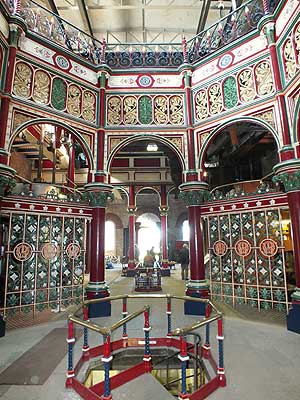
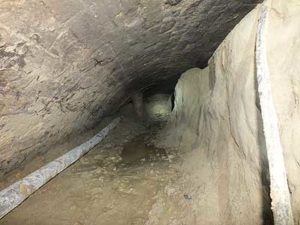
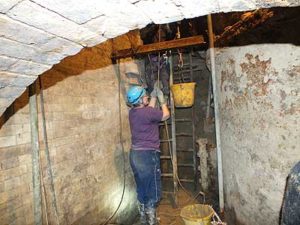
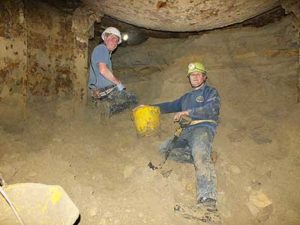
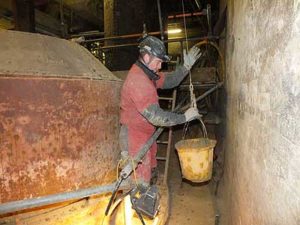
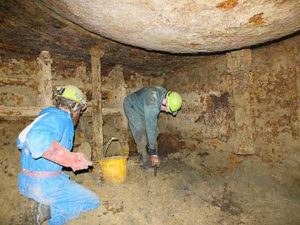


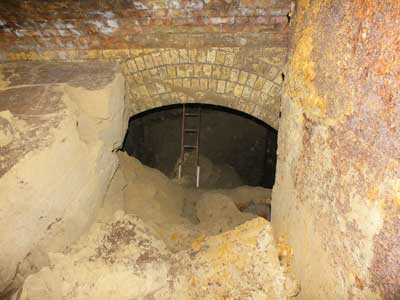
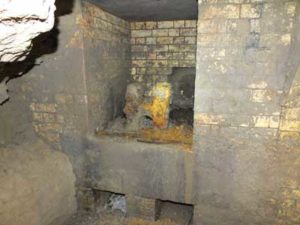
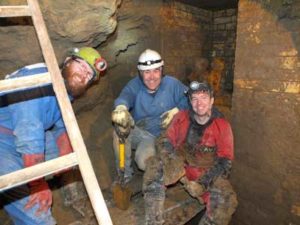
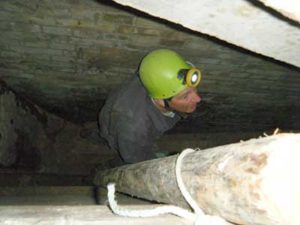
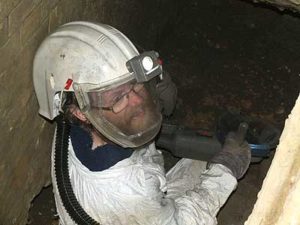
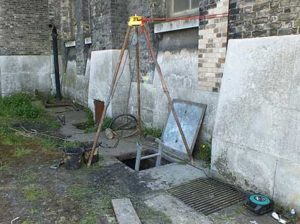
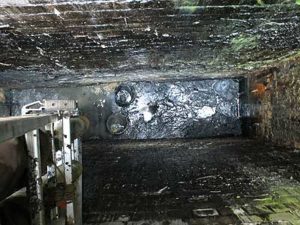

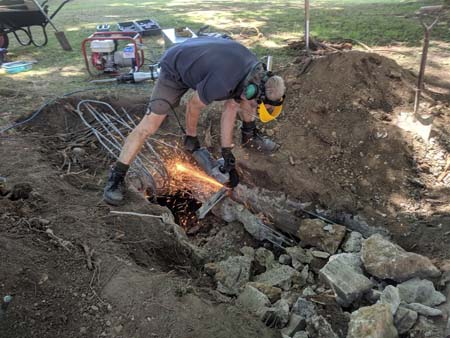
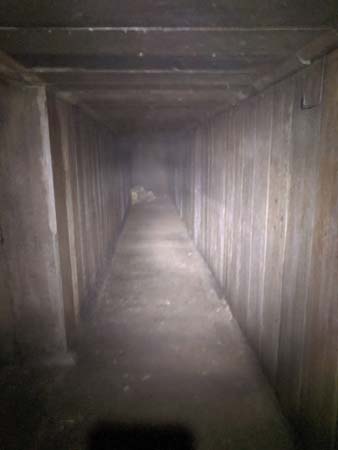
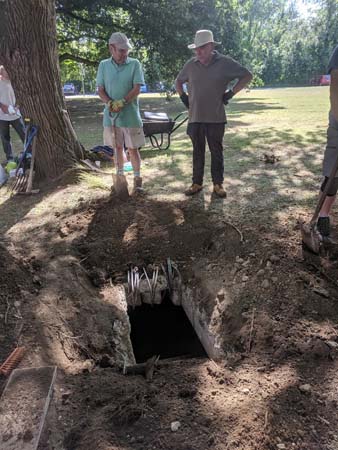
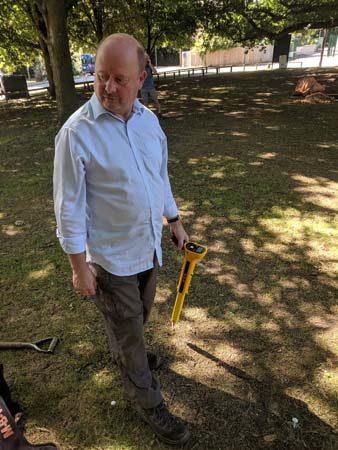

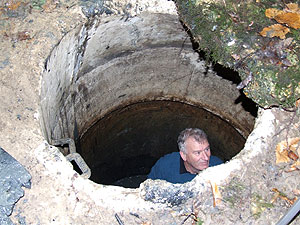
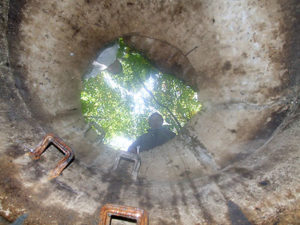
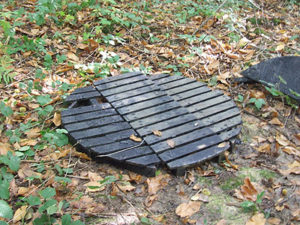
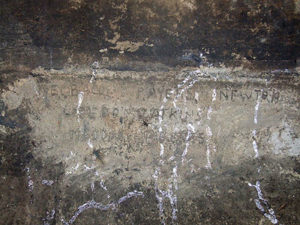

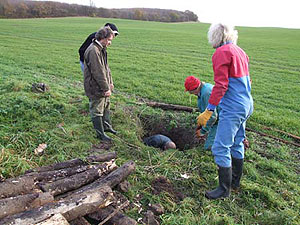
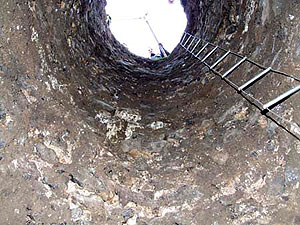
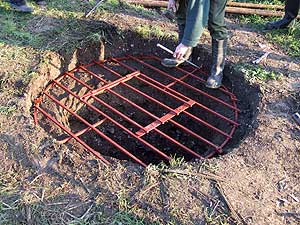
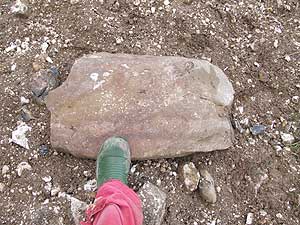
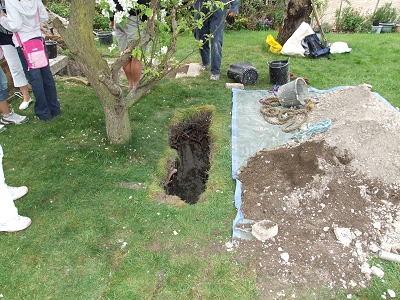
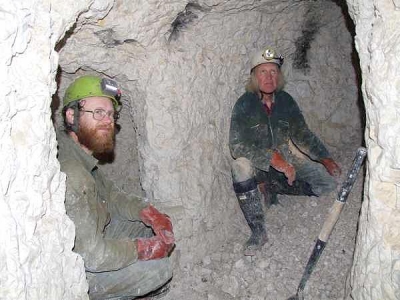
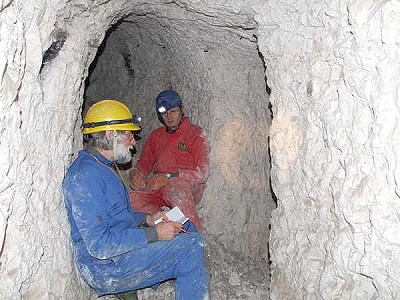
 17th December Work started on this dig. An aerial cable was placed across the hole using the fence posts for support. A second lifting cable and ingenious pulley system was hung below this to enable the bucket to be raised and then moved sideways.
17th December Work started on this dig. An aerial cable was placed across the hole using the fence posts for support. A second lifting cable and ingenious pulley system was hung below this to enable the bucket to be raised and then moved sideways.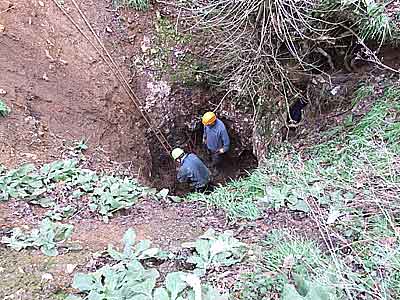 28th January After another early start 2 members who wont be named decided to take the exercise and walk the ‘short’ way across the fields to the dig. Unfortunately they took a wrong turning somewhere and ended up going completely the wrong way. They arrived about 1 hour after they left the car park. Progress was slow because the excessive amounts of wire in the hole and we even had to resort to using a car to pull it out. We didn’t get as much done as we would have liked to but we think we can now see the top of the chamber.
28th January After another early start 2 members who wont be named decided to take the exercise and walk the ‘short’ way across the fields to the dig. Unfortunately they took a wrong turning somewhere and ended up going completely the wrong way. They arrived about 1 hour after they left the car park. Progress was slow because the excessive amounts of wire in the hole and we even had to resort to using a car to pull it out. We didn’t get as much done as we would have liked to but we think we can now see the top of the chamber.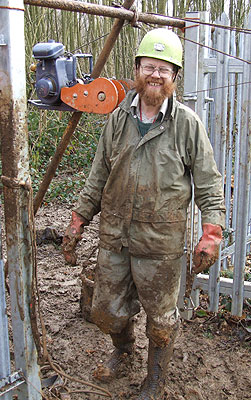 25th February Work continued and good progress was made despite the weather. We managed to remove lots of wire along with many old logs from the hole. At the end of the day the top of a small chamber was visible.
25th February Work continued and good progress was made despite the weather. We managed to remove lots of wire along with many old logs from the hole. At the end of the day the top of a small chamber was visible.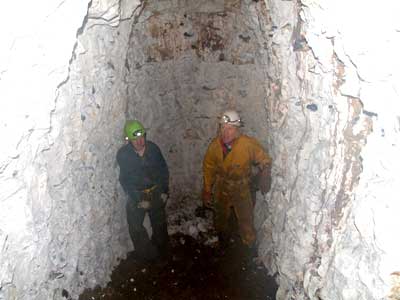 25th March Despite a promising start the top of the chamber visible last time has so far been a bit disappointing. Although just big enough to crawl into it seemed to be very small and almost entirely back filled. However after several hours of digging a small entrance was found about 120° from the small one. Clive was the first to enter and explore this, despite an initial concern about the quality of the air. The chamber turned out to be larger then expected and unusual in design as it turned through 90°. This chamber is about 20′ long by about 6′ wide with a height of about 10′. There is another small chamber off the back of this which looks as if it may connect to the small chamber first discovered. For more pictures
25th March Despite a promising start the top of the chamber visible last time has so far been a bit disappointing. Although just big enough to crawl into it seemed to be very small and almost entirely back filled. However after several hours of digging a small entrance was found about 120° from the small one. Clive was the first to enter and explore this, despite an initial concern about the quality of the air. The chamber turned out to be larger then expected and unusual in design as it turned through 90°. This chamber is about 20′ long by about 6′ wide with a height of about 10′. There is another small chamber off the back of this which looks as if it may connect to the small chamber first discovered. For more pictures 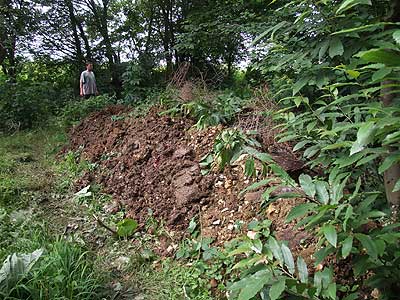 15th July It was amazing to see just how much growth had taken part since we last visited. Nature seems extreamly keen on reclaiming the hole and the surrounding area. Despite further digging the only thing we found was a mouse in one of the holes made to probe for the third chamber. After some deliberation it was decided to persue the dig no further. The bats will have to make do with a single chamber. The picture shows the spoil heap from the dig. For more pictures
15th July It was amazing to see just how much growth had taken part since we last visited. Nature seems extreamly keen on reclaiming the hole and the surrounding area. Despite further digging the only thing we found was a mouse in one of the holes made to probe for the third chamber. After some deliberation it was decided to persue the dig no further. The bats will have to make do with a single chamber. The picture shows the spoil heap from the dig. For more pictures 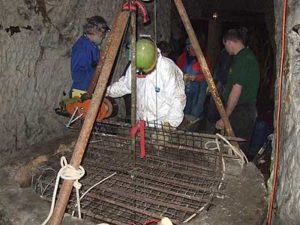
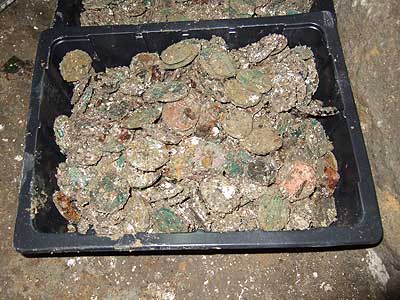
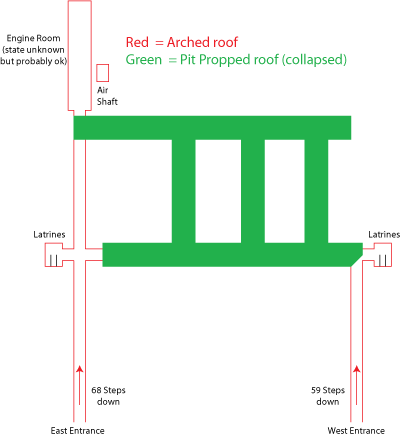

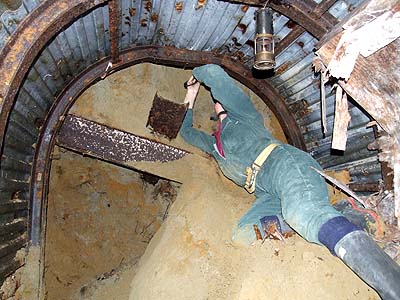
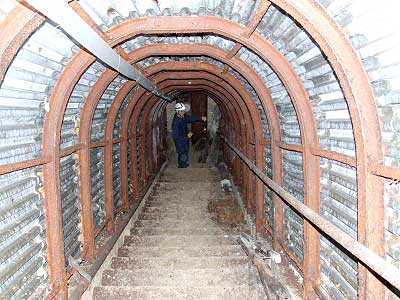
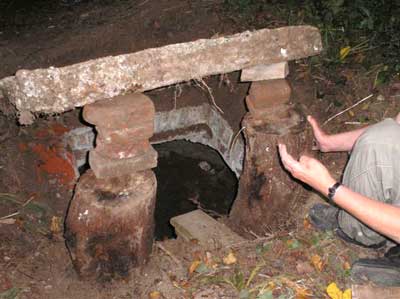
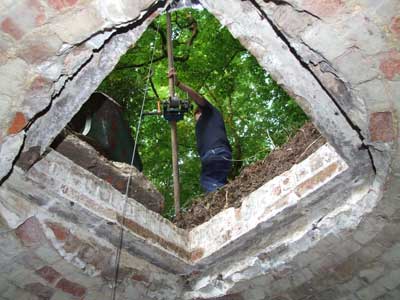
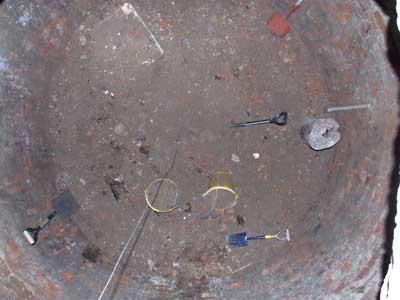
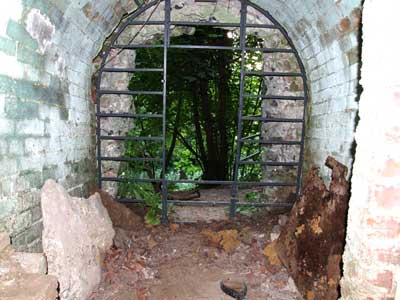
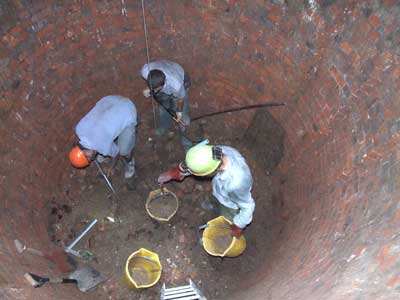
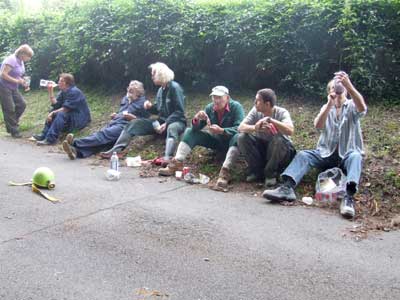
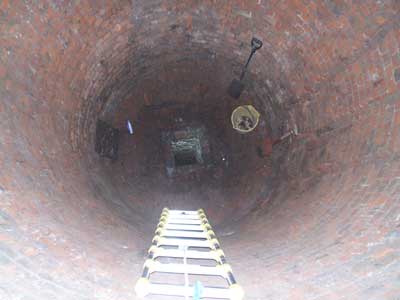
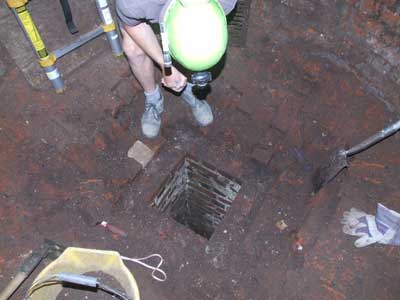
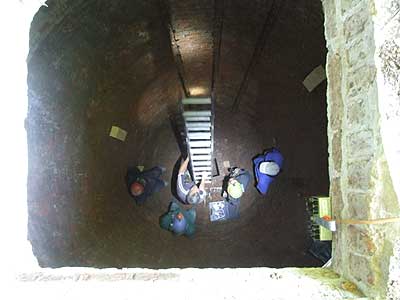
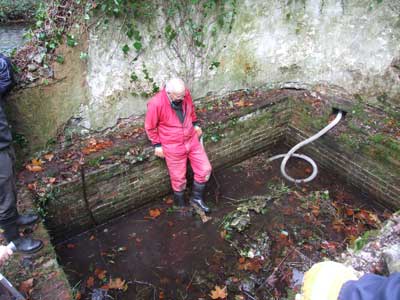
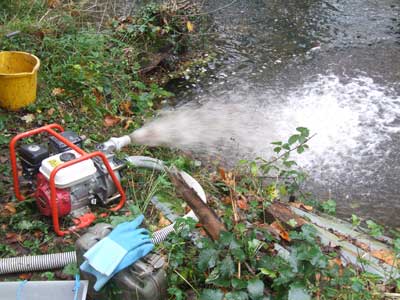
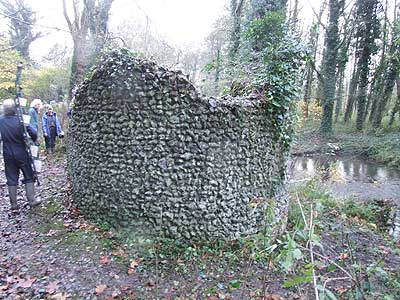
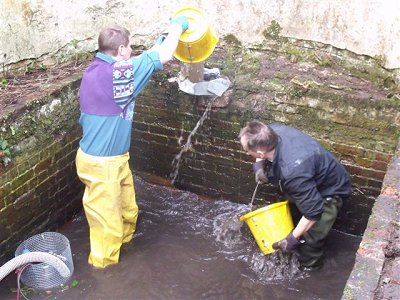 Manual bailing as pump couldn’t cope.
Manual bailing as pump couldn’t cope.